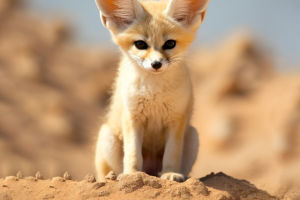Luck's Messenger
The Eurasian magpie, a bird widely distributed across Eurasia, belongs to the Corvidae family. Known for its striking appearance and intelligence, it holds a significant place in various cultures, often seen as a symbol of good luck.
The Eurasian magpie’s distinctive look, characterized by its black and white feathers and notably long tail, makes it stand out among other birds.
This bird is medium-sized, with adult magpies typically measuring between 40 and 50 centimetres in length and weighing around 200 to 250 grams. Its feathers are predominantly black and white. The head, back, and tail feathers are black, with a metallic sheen that glistens in the sunlight, while the feathers on the belly and shoulders are a bright white.
This sharp contrast between black and white not only makes the Eurasian magpie visually appealing but also aids in its identification in the wild. The tail feathers, almost half the length of its body, add to its elegance, especially when the bird is in flight.
The Eurasian magpie's adaptability is one of its most remarkable traits, allowing it to thrive in a wide range of environments. From the United Kingdom and France in Western Europe to China and Japan in East Asia, these birds have established themselves in diverse habitats.
They are found in forests, grasslands, city parks, and farmland, demonstrating their versatility. The Eurasian magpie’s diet reflects its adaptability; it feeds on small insects, fruits, seeds, and even garbage produced by human activities. This varied diet enables the bird to forage successfully in both rural and urban areas, often seen searching for food in cities.
Intelligence is a hallmark of the Eurasian magpie, setting it apart from many other bird species. It is one of the few birds known to use tools, a testament to its problem-solving abilities.
Scientific research has highlighted the Eurasian magpie's capacity for complex thought and learning. In controlled experiments, these birds have demonstrated an ability to use tools like branches to obtain food, showcasing their ability to learn through observation and adapt their behaviour accordingly. Additionally, Eurasian magpies possess strong memories, enabling them to remember the locations where they have stored food and retrieve it when necessary.
Social behaviour is another notable aspect of the Eurasian magpie's life. These birds often live in family units, displaying a strong sense of community. Nest building typically occurs in the spring, with magpies constructing their nests in tall trees using a combination of woven branches and grass blades.
The female usually lays between four to seven eggs in each nesting period. After approximately three weeks of incubation, the chicks hatch, and both parents take an active role in raising them until they are ready to fly and forage independently.
The Eurasian magpie holds a rich and diverse image in various cultures. In Chinese culture, the magpie is revered as an auspicious bird, often associated with celebration and good fortune. In Western traditions, the magpie is sometimes viewed as a symbol of mystery and wisdom, with legends linking it to communication with the spirit world.
However, the Eurasian magpie's relationship with humans has not always been positive. In some regions, it is considered a pest, particularly in agricultural areas where it can damage crops and fruits, leading to losses for farmers.
Additionally, the magpie's tendency to prey on the eggs and young of other bird species has made it an unwelcome presence among certain bird populations. This predatory behaviour often provokes hostility from other birds, contributing to the complex dynamics between the Eurasian magpie and its environment.
The Eurasian magpie is not only a visually striking and intelligent bird but also a cultural icon in many societies. Its presence enriches the natural environment, adding a layer of cultural significance to the landscapes it inhabits.
Whether in rural areas or urban settings, the Eurasian magpie's cheerful calls can often be heard, serving as a reminder of the beauty and hope it symbolizes. These birds, with their vibrant personalities and cultural importance, continue to be a cherished part of the natural world, bridging the gap between nature and human society.


